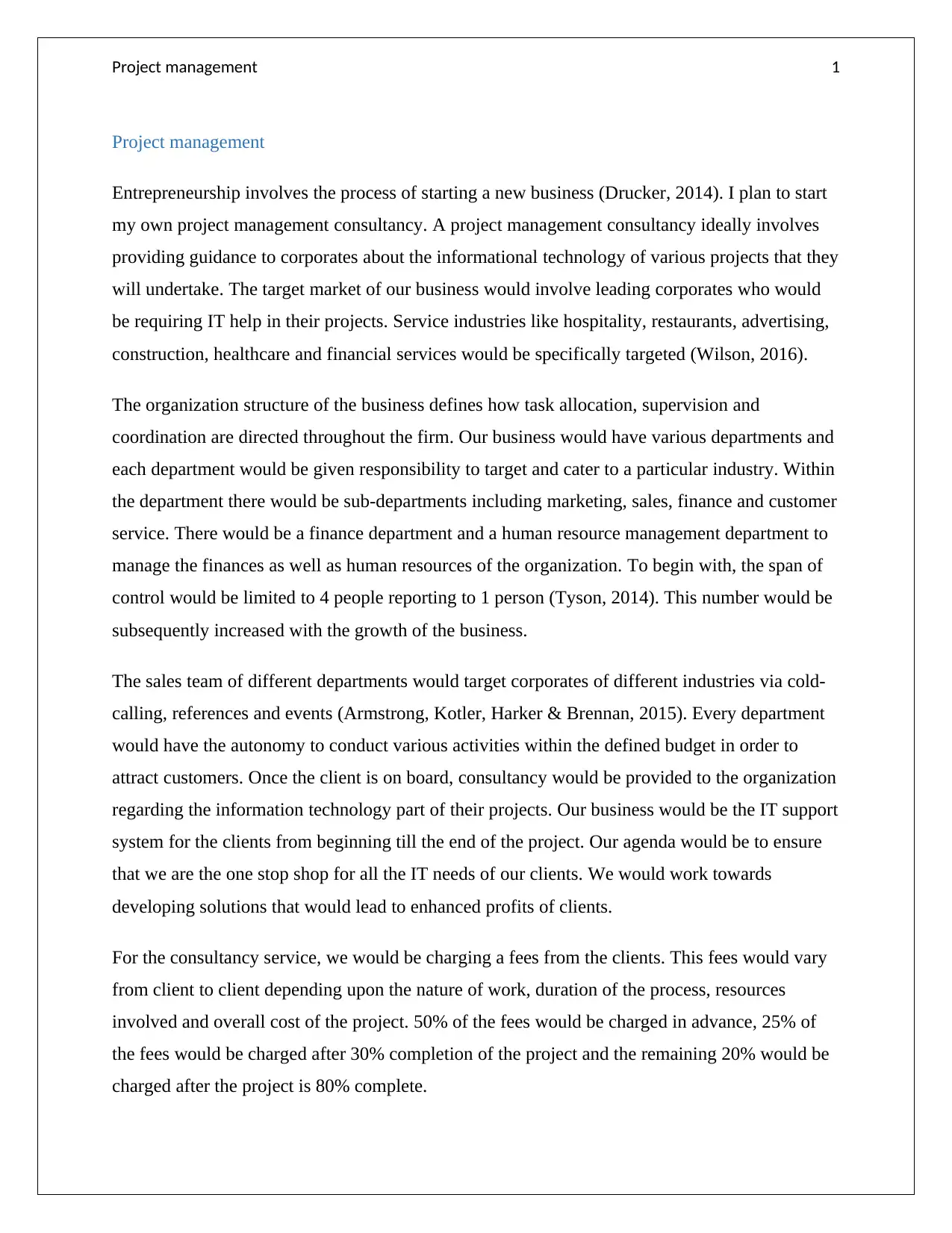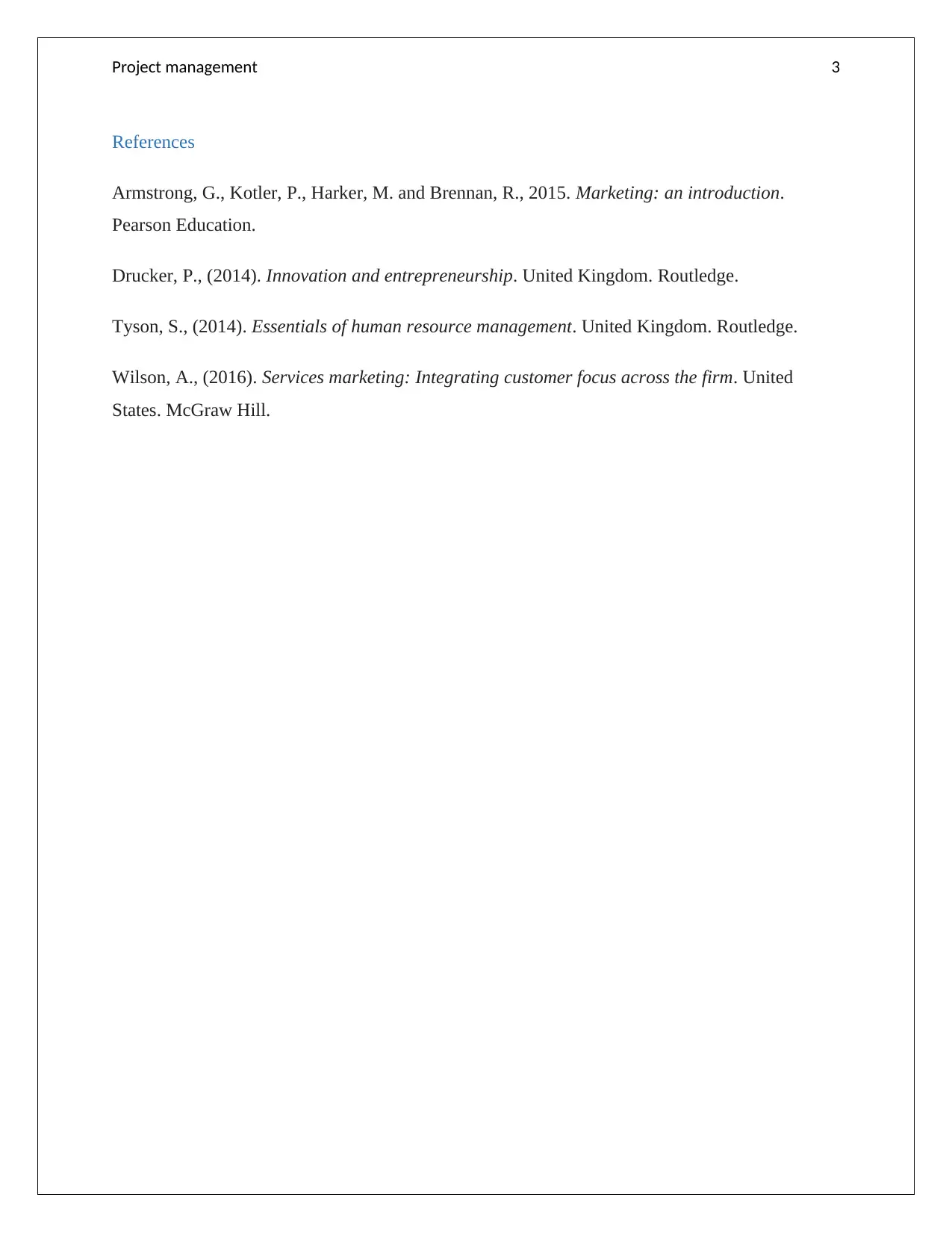Entrepreneurship Project: Project Management Consultancy Business Plan
VerifiedAdded on 2023/06/15
|4
|588
|209
Project
AI Summary
This entrepreneurship project details the creation of a project management consultancy. It covers the business's target market, focusing on service industries needing IT support, and outlines the organizational structure with departments catering to specific industries. The project explains the consultancy's service offerings, which include providing IT support throughout client projects, aiming to be a one-stop shop for all IT needs. The pricing strategy involves charging fees based on project nature, duration, and resources, with payments structured across project milestones. The project emphasizes customer loyalty and long-term client relationships as key business goals. Desklib is a great resource for students looking for similar solved assignments and past papers.
1 out of 4









![[object Object]](/_next/static/media/star-bottom.7253800d.svg)